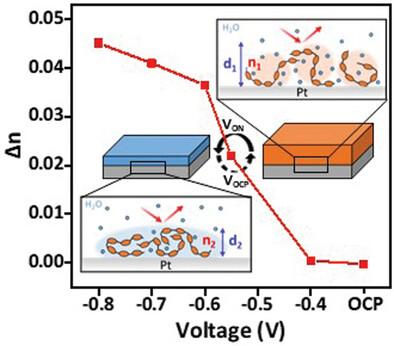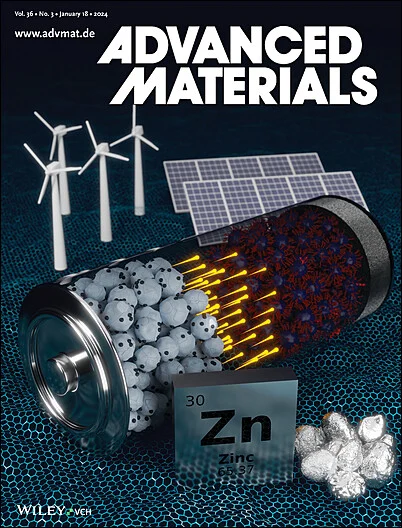Electrochemically Driven Optical Dynamics of Reflectin Protein Films
IF 27.4
1区 材料科学
Q1 CHEMISTRY, MULTIDISCIPLINARY
引用次数: 0
Abstract
Neuronally triggered phosphorylation drives the dynamic condensation of reflectin proteins, enabling squid to fine tune the colors reflected from specialized skin cells (iridocytes) for camouflage and communication. Reflectin, the primary component of iridocyte lamellae, forms alternating layers of protein and low refractive index extracellular space within membrane-encapsulated structures, acting as a biologically tunable distributed Bragg reflector. In vivo, reflectin condensation induces osmotic dehydration of these lamellae, reducing their thickness and shifting the wavelength of reflected light. Inspired by this natural mechanism, we demonstrate that electrochemical reduction of imidazolium moieties within the protein provides a reversible and tunable method to control the water volume fraction in reflectin thin films, allowing precise, dynamic modulation of the film’s refractive index and thickness — mimicking the squid’s dynamic color adaptation. To unravel the underlying mechanisms, we developed electrochemical correlative ellipsometry and surface plasmon resonance spectroscopy, enabling real-time analysis of optical property changes of reflectin films. This electrochemically driven approach offers unprecedented control over reflectin condensation dynamics. Our findings not only deepen the understanding of biophysical processes governing cephalopod coloration but also pave the way for bio-inspired materials and devices that seamlessly integrate biological principles with synthetic systems to bridge the biotic-abiotic gap.

求助全文
约1分钟内获得全文
求助全文
来源期刊

Advanced Materials
工程技术-材料科学:综合
CiteScore
43.00
自引率
4.10%
发文量
2182
审稿时长
2 months
期刊介绍:
Advanced Materials, one of the world's most prestigious journals and the foundation of the Advanced portfolio, is the home of choice for best-in-class materials science for more than 30 years. Following this fast-growing and interdisciplinary field, we are considering and publishing the most important discoveries on any and all materials from materials scientists, chemists, physicists, engineers as well as health and life scientists and bringing you the latest results and trends in modern materials-related research every week.
 求助内容:
求助内容: 应助结果提醒方式:
应助结果提醒方式:


